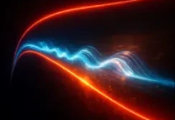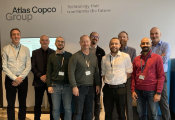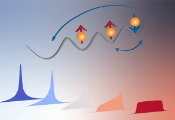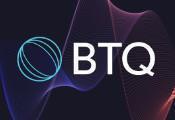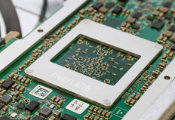TU Darmstadt Publish on Architecture With 1,000-Plus Atomic Qubits in a Single Plane
February 19, 2024 -- Making quantum systems more scalable is one of the key requirements for the further development of quantum computers because the advantages they offer become increasingly evident as the systems are scaled up. Researchers at TU Darmstadt have recently taken a decisive step towards achieving this goal. The results of their research have now been published in a prestigious publication.
Quantum processors based on two-dimensional arrays of optical tweezers, which are created using focussed laser beams, are one of the most promising technologies for developing quantum computing and simulation that will enable highly beneficial applications in the future. A diverse range of applications from drug development through to optimizing traffic flows will benefit from this technology.
These processors have been able to hold several hundred single-atom quantum systems up to now, whereby each atom represents one quantum bit or qubit as the basic unit of quantum information. In order to make further advances, it is necessary to increase the number of qubits in the processors. This has now been achieved by a team headed by Professor Gerhard Birkl from the “Atoms – Photons – Quanta” research group in the Department of Physics at TU Darmstadt.
In a research article, which was first published at the beginning of October 2023 on the arXiv preprint server and has now also been published following scientific peer review in the prestigious journal OPTICA, the team reports on the world’s first successful experiment to realize a quantum-processing architecture that contains more than 1,000 atomic qubits in one single plane.
Milestone: Over 1,000 controllable atomic qubits achieved for the first time
“We are extremely pleased that we were the first to break the mark of 1,000 individually controllable atomic qubits because so many other outstanding competitors are hot on our heels”, says Birkl about their results.
This was achieved by introducing the novel method of “quantum bit supercharging”. It allowed them to overcome the restrictions imposed on the number of usable qubits by the limited performance of the lasers. 1305 single-atom qubits were loaded in a quantum array with 3,000 trap sites and reassembled into defect-free target structures with up to 441 qubits. By using several laser sources in parallel, this concept has broken through the technological boundaries that had been perceived as being almost insurmountable up to now.
For many different applications, 1,000 qubits is seen as the threshold value from which the boost to efficiency promised by quantum computers can now be demonstrated for the first time. Researchers around the world have thus been working intensively to be the first to break this threshold. The recently published research work demonstrates that for atomic qubits this breakthrough was achieved for the first time worldwide by the research group headed by Professor Birkl. The scientific publication also describes how further increases in the number of laser sources will enable qubit numbers of 10,000 and more in just a few years.


